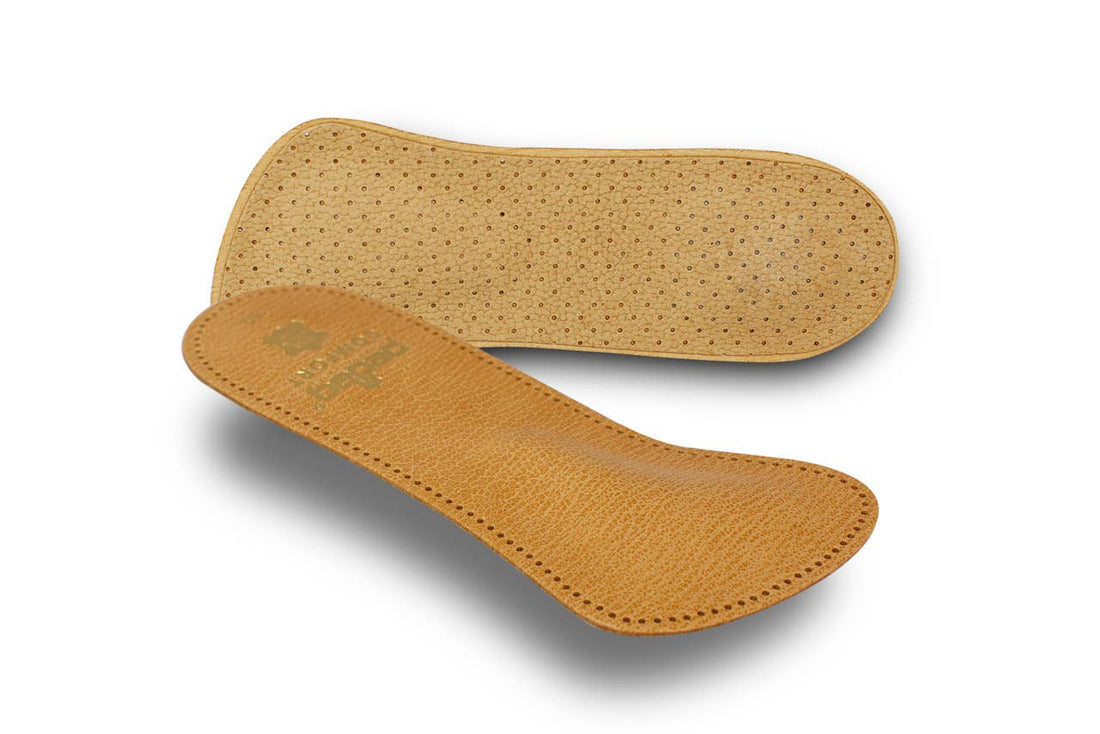
Neuromas vs. Metatarsalgia: Top Podiatrist-Recommended Relief Strategies for Ball-of-Foot Pain
Share
Understanding Neuromas & Metatarsalgia: Relief Starts Here! 🦶💡
What Are They?
-
Morton’s Neuroma
Morton's neuroma is a degenerative neuropathy of the interdigital nerve, most commonly located between the 3rd and 4th metatarsal heads. Despite its name, it's not a true tumor but rather a thickening or fibrosis of the nerve tissue due to chronic irritation and compression. This condition often manifests as sharp, burning pain or a sensation akin to stepping on a pebble.
-
Metatarsalgia
Metatarsalgia refers to pain and inflammation in the ball of the foot, typically under the metatarsal heads. The discomfort can range from a dull ache to sharp, stabbing pain, often exacerbated by activities like walking or running. Common causes include ill-fitting footwear, excessive pressure from high-impact activities, and foot deformities.
How to Tell Them Apart
| Condition | Key Symptoms |
|---|---|
| Morton’s Neuroma | Tingling, numbness, sharp or burning pain between toes; feeling like a pebble underfoot. |
| Metatarsalgia | Dull to sharp pain in the ball of the foot—typically worsens with standing or activity. |
Why Causes Overlap👣
Both conditions share common risk factors, including:
- Ill-fitting shoes: Tight toe boxes, high heels, and lack of cushioning can increase pressure on the forefoot.
- Abnormal foot mechanics: Flat feet or high arches can lead to uneven distribution of weight.
- Repetitive stress: Activities like running or high-impact sports can exacerbate symptoms.
-
Foot misalignments: Conditions such as bunions or hammertoes can contribute to nerve compression.
Treatment Strategies
Conservative Measures (Your First Line)
- Footwear adjustments: Opt for shoes with a wide toe box, low heels, and adequate cushioning.
- Orthotic devices: Use metatarsal pads, arch supports, and orthotic insoles to offload stress from irritated areas.
- Rest and ice: Apply ice packs to reduce inflammation and avoid activities that exacerbate pain.
- NSAIDs: Nonsteroidal anti-inflammatory drugs can help alleviate pain and swelling.
Clinical Interventions
- Corticosteroid injections: Ultrasound-guided injections can reduce inflammation and provide temporary relief.
- Surgical options: For persistent cases, procedures like neurectomy, alcohol injection, cryoablation, or radiofrequency ablation may be considered.
Featured Relief Products from PodiatryMarket.com
Let's delve into a comprehensive overview of the products I have curated, each designed to alleviate foot pain associated with neuromas and metatarsalgia. As a board-certified podiatrist and owner of PodiatryMarket.com, I’ve carefully selected these items to provide effective, non-invasive relief for your customers.
(All available online at PodiatryMarket.com, links are to the product page)
1. ZenToes Metatarsal Sleeves with Gel Padding – Small / Medium
Description: These fabric sleeves feature integrated gel pads that cushion the ball of the foot, absorbing shock and reducing pressure on the metatarsal heads. Ideal for individuals experiencing metatarsalgia or Morton's neuroma, they offer discreet support within most footwear.
Why It Works: The gel padding redistributes weight away from painful areas, providing immediate relief during daily activities.
2. Roller Fitness Mini Foot Massage Roller – Travel Size🦵
Description: This compact, travel-friendly roller provides pinpoint pressure to release trigger points and knots in the foot, easing joint and muscle stiffness. It's especially useful for individuals on their feet all day.
Why It Works: Regular use can reduce chronic pain, decrease inflammation, and increase mobility, making it a valuable tool for foot health.
3. Pedag Comfort – Metatarsal Arch Support Insole with T-Form Pad
Description: Handmade in Germany, these insoles feature an anatomically shaped metatarsal pad that targets specific areas of pain, reducing discomfort from Morton's neuroma and metatarsalgia. The soft heel padding provides additional comfort.
Why It Works: The combination of transverse arch support and metatarsal padding helps redistribute pressure, alleviating pain and promoting proper foot alignment.
4. Pedag Viva – Leather Orthotic Anti-Odor Insole with Arch Support🦶
Description: These full-length insoles are crafted from vegetable-tanned leather and feature a metatarsal pad, arch support, and heel cushioning. They are designed to fit snugly into any shoe and are particularly effective for relieving arch pain and plantar fasciitis.
Why It Works: The leather construction offers durability and breathability, while the supportive design addresses multiple foot issues simultaneously.
5. Pedag Viva Mini – Slim 3/4 Leather Orthotic Insole for Tight Shoes
Description: This 3/4-length insole is ideal for tight-fitting shoes, providing arch support and a metatarsal pad without crowding the toe box. It's particularly beneficial for individuals who need support in dress shoes or flats.
Why It Works: Its slim profile ensures that support is provided without compromising the fit of fashionable footwear.
6. Pedag Viva Sport – Orthotic Insole for Sneakers, Runners, and Trainers🏃💪
Description: Designed for active individuals, these insoles offer enhanced shock absorption, arch support, and a metatarsal pad. They are suitable for sneakers, running shoes, and trainers, providing comfort during high-impact activities.
Why It Works: The combination of cushioning and support helps prevent foot fatigue and injuries, making them ideal for sports and exercise.
By incorporating these products into your daily routine, you can effectively manage and alleviate the discomfort associated with neuromas and metatarsalgia. Each item has been selected for its quality and efficacy, ensuring that customers receive the best in foot care.
✅ Why These Work
These solutions address shock absorption, pressure redistribution, and transverse arch & metatarsal support—the foundational steps in conservative management for both conditions.
🩺Final Thoughts from Your Podiatrist-Owner ✨
Living with Morton's neuroma or metatarsalgia doesn't have to mean sacrificing your daily activities. Effective relief begins with making informed choices about footwear, incorporating supportive accessories, and utilizing targeted products designed to alleviate foot pain. By selecting shoes with a wide toe box and low heels, using metatarsal pads and orthotic insoles, and incorporating foot exercises into your routine, you can manage and reduce discomfort. Remember, consistent care and the right tools can help you stay active, comfortable, and confident in every step you take.
Dr. Ahmad Rashid, DPM
Board-Certified Podiatrist & Founder, PodiatryMarket.com
Disclaimer: This post is educational and not intended as a substitute for medical advice. Consult your healthcare professional for personalized recommendations.
